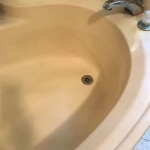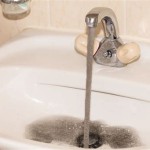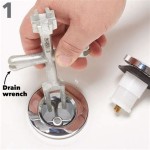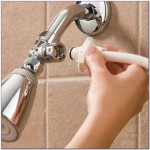Do I Need a Permit to Replace a Bathtub? Navigating the Regulatory Landscape
Replacing a bathtub might seem like a straightforward home improvement project, but it often involves more than just swapping out fixtures. Understanding whether a permit is required is a crucial first step to avoid potential legal issues, fines, and complications during the remodeling process. The requirements for permits vary significantly depending on the location and scope of the work. This article explores the factors that determine the necessity of a permit for bathtub replacement and offers guidelines for ensuring compliance with local regulations.
The primary purpose of a building permit is to ensure that construction and renovation projects adhere to established building codes and safety standards. These codes are put in place to protect the health, safety, and welfare of both the property owner and the general public. By requiring permits for certain types of work, local governments can regulate construction practices, ensuring that structures are sound, plumbing is installed correctly, and electrical systems are safe. Ignoring permit requirements can lead to costly consequences, including stop-work orders, fines, and the need to redo work that doesn't meet code.
Understanding When a Permit is Typically Required
Generally, a permit is required when a bathtub replacement involves alterations to the plumbing system or the structural components of the bathroom. Minor cosmetic changes, such as simply replacing a bathtub with a similar model in the same location without modifying the plumbing, might not necessitate a permit. However, if the project includes any of the following, a permit is highly likely to be required:
- Altering Plumbing: Any changes to the water supply lines, drain lines, or the vent system typically necessitate a permit. This includes moving the location of the drain, rerouting pipes, or installing new plumbing fixtures. Because plumbing work directly impacts the water supply and waste disposal systems, local authorities are keen to ensure that the work is done safely and according to code to prevent leaks, contamination, and other issues.
- Structural Changes: If the bathtub replacement involves altering the walls, floor, or framing around the bathtub, a permit is almost certainly required. This could include removing or modifying wall studs to accommodate a larger bathtub or reinforcing the floor to support the weight of a heavier tub. Structural modifications can affect the integrity of the building, so a permit process ensures that the changes are properly engineered and executed.
- Electrical Work: If the project involves any electrical work, such as installing a new electrical outlet for a whirlpool bathtub or relocating existing wiring, an electrical permit will be necessary. Electrical work is heavily regulated due to the risk of fire and electrical shock. A licensed electrician is often required to perform the electrical work and obtain the necessary permits.
- Changes to the Waterproofing System: Altering the waterproofing membrane or system around the bathtub, such as replacing tiles or installing a new shower surround, might trigger permit requirements. Waterproofing is critical to preventing water damage to the underlying structure, and local codes often specify the types of materials and installation methods that must be used.
It is crucial to note that the specific regulations can vary significantly. The information provided here is a general overview, and homeowners should always consult with their local building department to determine the exact requirements for their particular project.
Factors Influencing Permit Requirements
Several factors influence whether or not a permit is needed for a bathtub replacement. These factors relate to the scope of the project, the location of the property, and local building codes.
- Location of the Property: Permit requirements are determined at the local level, typically by the city or county in which the property is located. Different jurisdictions have different building codes and regulations, so what is required in one location may not be required in another. Even within the same state, permit requirements can vary widely.
- Scope of the Project: As mentioned earlier, the extent of the work being performed directly impacts the need for a permit. A simple swap of a bathtub with an identical model is less likely to require a permit than a complete bathroom remodel that involves moving plumbing and electrical systems.
- Type of Bathtub: The type of bathtub being installed can also influence permit requirements. For example, installing a whirlpool bathtub with electrical components will almost certainly require an electrical permit, whereas a standard bathtub without any electrical connections might not. Similarly, a heavier, cast-iron bathtub might necessitate a structural assessment to ensure the floor can support the weight, potentially triggering additional permit requirements.
- Age of the Building: Older buildings may have different permit requirements than newer buildings. In some cases, replacing a bathtub in an older building may trigger the need to bring the entire bathroom up to current code, which could involve additional work and permits.
Given these factors, it is essential to research the specific requirements in the local area. This can usually be done by visiting the website of the local building department or contacting them directly.
How to Determine if a Permit is Required and Obtain One
The most reliable way to determine if a permit is required for a bathtub replacement is to contact the local building department. This department is responsible for enforcing building codes and issuing permits. The following steps outline the process of determining permit needs and obtaining the necessary documentation:
- Contact the Local Building Department: The first step is to contact the local building department by phone, email, or in person. Explain the scope of the project and ask specifically about the permit requirements for replacing a bathtub. Provide details about any plumbing, electrical, or structural work that will be involved.
- Research Local Building Codes: Most building departments have their codes and regulations available online. Review these documents to understand the specific requirements for plumbing, electrical, and structural work. Pay attention to sections related to bathrooms, bathtubs, and remodeling.
- Submit a Permit Application: If a permit is required, the building department will provide a permit application form. This form will typically require detailed information about the project, including the scope of work, the materials being used, and the contractor performing the work (if applicable). It may also require submitting drawings or plans showing the proposed changes.
- Provide Necessary Documentation: Along with the permit application, the building department may require additional documentation, such as plumbing plans, electrical diagrams, structural calculations, and proof of insurance for the contractor. The specific requirements will vary depending on the location and the scope of the project.
- Pay Permit Fees: Permit fees are typically based on the value of the project. The building department will provide a fee schedule and explain how to pay the fees.
- Schedule Inspections: Once the permit is approved, the building department will schedule inspections at various stages of the project to ensure that the work is being done according to code. These inspections may include a plumbing inspection, an electrical inspection, and a final inspection.
- Maintain Records: Keep all permit documents, inspection reports, and other relevant records in a safe place. These documents may be needed for future reference or when selling the property.
Failing to obtain the necessary permits can result in significant penalties, including fines, stop-work orders, and the need to redo work that doesn't meet code. It can also create problems when selling the property, as potential buyers may be hesitant to purchase a property with unpermitted work. Therefore, it is always best to err on the side of caution and obtain the necessary permits before starting any bathtub replacement project.
Engaging a licensed contractor can greatly simplify the permit process. A reputable contractor will be familiar with local building codes and permit requirements and can handle the permit application and inspection process on behalf of the homeowner. They can also ensure that the work is done according to code, avoiding potential problems down the road.
Navigating the regulatory landscape of home improvement projects can be complex, but understanding the permit requirements for bathtub replacement is essential for ensuring a successful and compliant project. By contacting the local building department, researching local building codes, and obtaining the necessary permits, homeowners can avoid potential legal issues and ensure that their bathtub replacement project is done safely and according to code.

Do You Need A Permit To Replace Bathtub Bathwraps

Do You Need Permits To Remodel A Bathroom Sweeten Com

Do You Need Permits For Bathroom Remodel What To Know In 2024 Badeloft

Permits For Bathroom Remodeling Projects Complete Guide

Permits For Bathroom Remodeling Projects Complete Guide

Hold Up Do You Need Permits To Remodel A Bathroom

Do You Need Permits To Remodel A Bathroom

Do You Need A Permit For Bathroom Remodel Understanding Requirements

Permits For Bathroom Remodeling Projects Complete Guide

Do You Need A Permit For Bathroom Remodel Understanding Requirements
Related Posts








